College of Education
6 Numbers and Nuclear Families: Gender and Work in Indian Boarding School Mathematics Curricula, 1879-1932
Luke Kim (Kenyon College); José Gutiérrez (Education, Culture and Society, University of Utah); Charles Sepulveda (Ethnic Studies, University of Utah); Kēhaulani Vaughn (Education, Culture and Society, University of Utah); and Cynthia Benally (Education, Culture and Society, University of Utah)
Mentor: José Gutiérrez (Education, Culture & Society, University of Utah)
Abstract
In this paper, we address the thread of cisheteropatriarchal structures in the mathematics curriculum from the Indian boarding school system during the administration of Estelle Reel. Specifically, we focus our analysis on how gender is associated with housework in math word problems. We argue that these problems reflect how ideologies of gender oppression are a fundamental aspect and extension of settler colonial capitalism within the United States (Nakano Glenn, 2015). Theoretically, we draw upon prior Marxist feminist work that parse out the relationship between capitalism and patriarchy (Federici 1975; Vogel 1983). Further, we directly connect these theoretical approaches in the analysis of the mathematical content to broader U.S. federal policy and reformist efforts (Stremlau, 2005) during our period of study, 1879-1932.
Introduction & Background
This paper presents an extension on ongoing research on math education in the Indian Boarding School System between 1879-1932 (Gutíerrez et. al, 2021) by focusing on how gender ideologies surrounding women were unmistakably central in the math word problems during the time. Elsewhere, we elaborate on how this content reflects federal policy of land dispossession (Smith et. al, 2022), which was also intimately connected to federal policies concerning indigenous women (Sepulveda, 2018; Stremlau, 2005). The aims of this paper are to 1) describe the particular ways in which gender appears in the mathematical curriculum of Indian boarding schools and 2) interpret the meaning of these problems within the context of larger settler colonial capitalist patriarchal systems to contribute to our understanding of how mathematics can act as a form of propaganda in reproducing these structures. We delineate our framework of analysis, methods, and significance in the following sections below.
Theoretical Framework
Drawing upon TribalCRIT (Brayboy, 2005), Social Reproduction Theory (Vogel 1983, Bhattacharya and Fraser, 2017), and Evelyn Nakano Glenn’s (2015) analyses of settler colonialism as the basis of race-gender formation in the United States, we suggest that the presence of cisheteropatriarchal ideologies in mathematics education (both during the time studied and now) are fundamentally grounded in the ongoing and ever-present structure of U.S. settler colonial capitalism and forced assimilation. In particular, one of the goals of U.S. federal assimilation policy at the time was to “fracture […] extended indigenous families into male- dominant, nuclear families, modeled after middle-class, Anglo-American households” (Stremlau, 2005, p. 265), which required women’s socialization into reproductive labor roles central to capitalist patriarchy (Federici 1975). By focusing on the thread of social reproduction in the boarding schools’ mathematics curriculum then, this paper will demonstrate not only the indivisibility of this overarching structure, but also the necessity of critical mathematics pedagogy approaches that pay due attention to the insidious practices of settler colonial capitalism that undergird education to this day.
Methodology
As part of a larger ongoing historiography of mathematics education in Indian boarding schools in the late 19th and early 20th centuries (Gutíerrez et. al, 2021), our research team came across a wealth of archival evidence related to mathematics education in the Estelle Reel Papers from her time as the Superintendent of Indian Schools. The main data source utilized in this paper came from the “Arithmetic” folder, a collection of math curricula in the boarding school system, which most likely originated from Reel’s summer training program for teachers around 1906-1907. Data consisted mainly of math word problems that were formulated for use in classrooms in different schools across the Indian education system, although there were some samples that followed more of a script that teachers would presumably use for interactive learning with their pupils (see tables).
Data analysis began with a process of open coding (Saldaña, 2012) and transcription of all materials to concretely observe general trends within the mathematics curriculum from the time. We are writing code books, identifying emerging categories representing distinct ways math problems reflect settler colonialism, and conducting statistical analyses based on the coding schema created from this process. We employed textual analysis methods (Carley, 1994) in the interpretation of problems that would fall into this purview to parse out the sociopolitical implications thereof.
Analysis
With regards to the actual math problems themselves, gender, as it pertains to women, could generally be categorized into two main groups. The first group, or what we term as explicitly gendered, encompassed problems that would mention unambiguously feminine-coded subjects (usually through names or through descriptors like “girls” and “women”) following patriarchal norms in a clear-cut manner.
An example exercise that fell under this category is the following (see table 1 for more examples):
“If 1 girl washes 117 cups after supper, how many cups can 2 girls wash?”
The second, or what we named as implicitly gendered, included scenarios where some form of “feminine behavior” or a “feminine domain” as understood in a Eurocentric context was being exhibited, but without an immediately discernible subject and in some cases without a subject at all. These were generally more difficult to classify because of a lack of a definitive reference to women or girls, but could still be ascertained by drawing upon the cultural discourses of what was thought to be essential to “proper womanhood” at the time. A problem that might be grouped under this classification would be the following (see table 2 for more examples):
“I washed 138 dish towels and ironed 50% of them. How many dish towels did I iron?” (pg. 1)
Interestingly, however, was that across both groups a common through line in the representations and discourses of “womanhood” and “girlhood” was the primacy of reproductive labor (Federici, 1975; Vogel, 1983; Red Nation, 2020). The continual appearance of this thematic element is consistent with Trennert’s (1982) study of indigenous girls’ education in non-reservation boarding schools, where he notes that “[…] by the 1840s, the federal government had committed itself to educating Indian girls in the hope that women trained as good housewives would help their mates assimilate” (p. 272), presumably into the dominant mode of production based on how “men’s laziness” was a primary concern in these efforts. Thus, as a part of this larger attempt to enforce cultural assimilation among indigenous peoples into the growing capitalist society of the U.S., women’s education was largely focused on housewifization (Mies, 1986), to the point that even mathematics curricula reflected this agenda.
Explicitly gendered problems were generally self-explanatory, in the sense that these directly conveyed women and girls doing feminine tasks and thereby reinforced Eurocentric concepts of womanhood as tied to social reproduction. Even situations where the named feminine subjects did not do housework still had traces of reproductive labor in their content. For example, one exercise from a first-grade class in Fort Shaw presented a scenario where a girl named Rose played with dolls and broke one. While this may seem like an innocuous inclusion, presenting the act of playing with dolls as feminine can be read as socialization meant to place care work as staunchly in the domain of “women’s labor.” In this way, Eurocentric capitalist patriarchal norms were highly salient in the math curriculum through constructing a Manichean gender system that placed women as the primary source of socially necessary labor in the maintenance and reproduction of the working class.
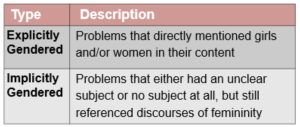
Figure 1: Explicitly Gendered vs. Implicitly Gendered
Like explicitly gendered problems, some of the implicitly gendered exercises were also straightforward in their content, albeit with the caveat that it wasn’t immediately clear who was doing the domestic labor (see example above). However, problems without a subject at all posed the most analytically interesting situations, in how they carried the implication of the permanence of women’s supposed role as reproductive laborers. Take, for instance, the following problem from a third-grade class at Haskell:
“There are 21 machines in the sewing room and each machine has 3 spools of white thread and 2 spools of black thread. How many spools of thread are there in all?”
In this case, while there is no subject doing “feminine” tasks, domestic labor still undergirds the mathematics practiced through asking students to count the number of spools of thread in the sewing room as an allusion to the production of clothing prescribed to women under capitalist patriarchy. And while this can be read just as a reference to the regime of domesticity in indigenous girls’ education in boarding schools, the fact that “womanhood” was tacitly attached to the physical object of the sewing machine itself socialized girls into understanding the Eurocentric gender binary as a fundamentally real phenomenon.
Reproductive labor as it was configured in the exercises was also typified as either waged/paid labor or unpaid labor. Paid labor included situations where domestic duties and tasks were performed for some form of financial compensation, such as one problem from Fort Shaw where students were asked to find the total amount of money they would receive for doing the laundry of faculty members. As Gutíerrez et. al (2021) has already elucidated upon, the hyperfocus on vocational training in the boarding school system meant that any explicit math education indigenous students would receive would also be embedded in this larger scheme, with girls specifically having a curriculum oriented around domestic servitude for white settlers (Lomawaima, 1994). With this in mind, these paid labor situations in the mathematics curriculum can easily be read as a form of training to make indigenous girls fill subservient domestic positions for whites, with the understanding that their labor should be traded for settler currency.
Unpaid labor situations also involved the performance of reproductive labor, but without a named form of payment, as in multiple cases where girls would do housework presumably by virtue of their gender (see table 2). And though these unpaid contexts could be interpreted as another facet of girls’ vocational training, they also arguably held an equally important role in socializing indigenous girls into the base unit of economic production in Eurocentric capitalism, that being the nuclear family. While at the time there were technically no federal policies explicitly focused on gender-based assimilation of indigenous peoples, family structures in the “civilizing mission” of the United States was a prominent and clear concern among white reformers at the time (Stremlau, 2005; Denetdale, 2017). As Estelle Reel (1901, quoted in Jacobs, 2005) herself put it, “The homes of the camp Indians are to be reached mostly through our schoolgirls, who are to be the future wives and mothers of the race, and on their advancement will depend largely the future condition of the Indian. All history has proven that as the mother is so is the home, and that a race will not rise above the home standard”. However, a core tenet of the nuclear family structure is the prescription of domestic work as a devalued, mystified “labor of love” that women are effortlessly able to do (Federici, 1975). Taken together with the eminent focus on families in reformer efforts, then, what appears is the idea that these unpaid contexts in the mathematics curriculum were a crucial part of conditioning indigenous girls into understanding themselves as naturally attuned to these tasks so they would later enter into the unpaid reproductive labor role in the nuclear family without much issue. At the same time, the undervaluing of these tasks also disrupted indigenous understandings of home maintenance as sacred and honorable, further contributing to the elimination of the native at the forefront of settler colonialism (Stewart-Haiwara, 2007; Tuck and Yang, 2012).
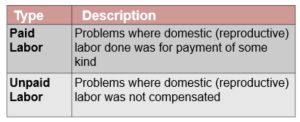
Figure 2: Paid Labor vs. Unpaid Labor
Significance
This paper contributes to existing scholarship and activist efforts addressing gender inequality in mathematics education, as feminist analytics are more necessary than ever before. By demonstrating how capitalist cisheteropatriarchy was a fundamental part of the settler colonial project in Indian boarding schools, we urge educators and researchers in mathematics education and beyond to consider how gender in a U.S. context falls into the structure of settler colonial capitalism, and how even supposedly objective subjects like mathematics perpetuate this (Nakano Glenn, 2015; Arvin et. al, 2013; Federici, 1975). Furthermore, as opposed to trends in scholarly research that simply seek to describe the existing disparities in education and learning, we call for approaches that directly attempt to explain the material cause of these inequities and seek to critique the structures of power and exploitation that propagate oppression (Tuck and Yang, 2014; Mojab and Carpenter, 2017). In doing so, we hope that theoretical approaches in critical education studies, such as the one presented here, can be better linked to actual praxis in educational settings.
Bibliography
Arvin, M., Tuck, E., & Morrill, A. (2013). Decolonizing feminism: Challenging connections between settler colonialism and Heteropatriarchy. Feminist Formations, 25(1), 8–34. https://doi.org/10.1353/ff.2013.0006
Bhattacharya, T., & Fraser, N. (2017). Social Reproduction theory: Remapping class, recentring oppression. Pluto Press.
Brayboy, B. M. K. (2005). Toward a tribal critical race theory in Education. The Urban Review, 37(5), 425–446. https://doi.org/10.1007/s11256-005-0018-y
Carley, K. (1994). Extracting culture through textual analysis. Poetics, 22(4), 291–312. https://doi.org/10.1016/0304-422x(94)90011-6
Carpenter, S., & Mojab, S. (2017). Revolutionary learning: Marxism, feminism and knowledge. Pluto Press.
Denetdale, J. N. (2017). The Uprising at Beautiful Mountain in 1913: Marriage and Sexuality in the Making of the Modern Navajo Nation. In J. Barker (Ed.), Critically Sovereign: Indigenous Gender, Sexuality, and Feminist Studies (pp. 69–98). essay, Duke University Press.
Editorial Council. (2020, August 9). Communism is the horizon, Queer Indigenous feminism is the way. The Red Nation. Retrieved July 29, 2022, from https://therednation.org/communism-is-the-horizon-queer-indigenous-feminism-is-the- way/
Federici, Silvia. & London Wages for Housework Committee. (1975). Wages against housework. Bristol: Falling Wall Press [for] the Power of Women Collective
Glenn, E. N. (2015). Settler colonialism as structure. Sociology of Race and Ethnicity, 1(1), 52– 72. https://doi.org/10.1177/2332649214560440
Gutíerrez, J. F., Shiver, S., Zarnetske, M., Sepulveda, C., Benally, C. & Vaughn, K.N. (2021). Assimilating mathematical knowledge: Tracing racist ideology in Indian boarding school mathematics curricula, 1879-1932. Paper to be presented at the annual meeting of the American Educational Research Association.
Jacobs, M. D. (2005). Maternal colonialism: White Women and Indigenous Child Removal in the American West and Australia, 1880-1940. The Western Historical Quarterly, 36(4), 453. https://doi.org/10.2307/25443236
Lomawaima, K. T. (1994). They called it prairie light: The story of Chilocco Indian School. University of Nebraska Press.
Mies, M. (1998). Patriarchy and accumulation on a world scale: Women in the International Division of Labour. Zed.
Saldaña, J. (2012). The coding manual for qualitative researchers. SAGE.
Sepulveda, C. (2018). Our Sacred Waters: Theorizing Kuuyam as a Decolonial Possibility. Decolonization: Indigeneity, Education & Society. 7(1), 40-58.
Smith, M. J., Kim, L., Benally, C., Sepulveda, C. A., Vaughn, K. N., & Gutiérrez, J. F. (2022). Allotments and arithmetic: Land dispossession in Indian boarding school mathematics curricula, 1879-1932 (manuscript in progress).
Stewart-Harawira, M. (2007). Practising Indigenous Feminism: Resistance to Imperialism. In J. Green (Ed.), Making space for Indigenous feminism (pp. 124–137). essay, Fernwood Publ.
Stremlau, R. (2005). “to domesticate and Civilize Wild Indians”: Allotment and the campaign to reform Indian families, 1875-1887. Journal of Family History, 30(3), 265–286. https://doi.org/10.1177/0363199005275793
Trennert, R. A. (1982). Educating Indian girls at nonreservation boarding schools, 1878-1920. The Western Historical Quarterly, 13(3), 271. https://doi.org/10.2307/969414
Tuck, E., & Yang, K. W. (2012). Decolonization is Not a Metaphor. Decolonization: Indigeneity, Education, and Society, 1(1), 1–40.
Tuck, E., & Yang, K. W. (2014). R-words: Refusing research. Humanizing Research: Decolonizing Qualitative Inquiry with Youth and Communities, 223–248. https://doi.org/10.4135/9781544329611.n12
Vogel, L., Ferguson, S., & McNally, D. (2013). Marxism and the Oppression of Women: Toward a Unitary Theory; new introduction by Susan Ferguson and David McNally. Haymarket Books.
Appendices
Appendix A – Tables
All problems cited in this paper are from the “Arithmetic” folder in the collection of the Estelle Reel Papers, Northwest Museum of Arts and Culture/Eastern Washington State Historical Society, Spokane, Washington.
Table 1: Explicitly gendered problems (original and transcribed problems)
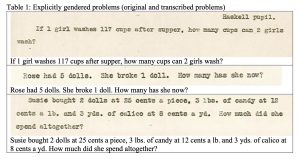
Table 2: Implicitly gendered problems (original and transcribed problems)
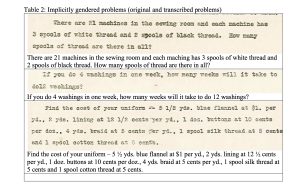
Table 3: Paid gendered labor (Original and transcribed problems)
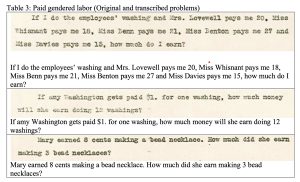
Table 4: Unpaid gendered labor (Original and transcribed problems)
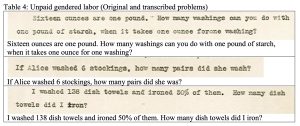
Appendix B – Code Book
Presents a preliminary coding schema, in which general themes emerged out of the math word problems from the Estelle Reel collection.
MATH CONTENT
ARITHMETIC: This grouping represents mathematics problems where students were asked to make use of the elementary operations of addition, subtraction, multiplication, and division
- SUMMING: Refers to instances where students were asked to sum/combine quantities with each other
- ADDITION: Problems in this category would be focused on the application of addition through finding the sum of objects or money. While there may be some overlap with the multiplication category, this subcode tended to be differentiated because of its lack of the use of phrases like “groups”
Examples:
“I had 11 oranges and my mother gave me 26 more. How many oranges have I now?” (pg. 3)
“If John can sew on 4 button and James can sew on 2, how many can both sew?” (pg. 11)
-
- SUBTRACTION: This represented instances where students would apply skills related to subtraction through finding differences. Questions tended to use phrases like:
- “[…] much left”
- “[…] many left”
- SUBTRACTION: This represented instances where students would apply skills related to subtraction through finding differences. Questions tended to use phrases like:
Examples:
“A man had 33 chickens and 6 were taken away. How many were left?” (pg. 7)
“There are three fish swimming in the river. George catches one fish. How many are there left?”
- GROUPING: This code represents problems where students were asked to think of quantities in terms of groupings through the skills of multiplication and division
- MULTIPLICATION: This subcode encompassed problems where students would have to use skills related to multiplication through thinking about collections of objects as groups added together. A common idea was based around the idea of using a base rate to find a total, with multiplication questions phrased as:
- “[abc] cents/dollars a [xyz]”
- “[abc] objects a [xyz]”
- MULTIPLICATION: This subcode encompassed problems where students would have to use skills related to multiplication through thinking about collections of objects as groups added together. A common idea was based around the idea of using a base rate to find a total, with multiplication questions phrased as:
Examples:
“I sell 15 cucumbers for 5 cents each. How much money do I receive?” (pg. 14)
“Find the cost of 28 pecks of potatoes at 85 cents a bushel.” (pg. 1)
-
- DIVISION: This included instances in which division would be a central part of the problem, with students being asked to make as many equal groups as possible from a total number. Questions might be characterized by the phrase “is each”.
Examples:
“If a farmer pays $588.60 for 6 horses, how much does each horse cost?” (pg. 11)
“How many times can you take 2 eggs from 14 eggs?” (pg. 12)
- PROPORTIONS: This code represents problems where students would think of quantities as parts in relation to a whole
- FRACTIONS: These problems would ask students to find a part or a number of parts of a whole group of objects or quantities, where the whole would be represented/abstracted as 1. Many of these problems would usually present a premise as “a person has/does [fraction] of [quantity] – how many did they have”. Questions may also ask students to combine different parts.
Examples:
“A watch cost $28. and a chain 5/7 as much. How much did both cost?” (pg. 9) “One cup of meal needs 1⁄2 teaspon salt. Four cup of meal will need how many teaspoonfuls of salt?” (pg. 32)
-
- PERCENTS: Similar to the fractions sub-subcode, students would be asked to find a certain amount of a whole, but in this case in the form of a percentage, where the whole would be represented/understood to be 100%.
Examples:
“I washed 138 dish towels and ironed 50% of them. How many dish towels did I iron?” (pg. 1)
“Mr. R.J. Brown bought 24 head of cattle for $1200. and sold them. He estimated his net gain at $10. a head, 20% of which was due to extra care feeding. What would have been the selling price per head if he had not taken the extra care?” (pg. 23)
- MISCELLANEOUS: This subcode encompasses mathematical skills that would not fall into the defined arithmetic skills above but still featured as a common theme in the archival evidence. Other mathematical skills not covered in this code book would fall into this category, just without a subcode
- CONVERSIONS: This sub-subcode would encompass problems where students would switch quantities in one type of unit to another. Units were always in the imperial system used in the United States, although some of the units may be unfamiliar to viewers today.
- CONVERSIONS [simple]: These questions typically were more focused on memorizing the actual value of units, and would usually only involve converting one of a unit to another
- CONVERSIONS: This sub-subcode would encompass problems where students would switch quantities in one type of unit to another. Units were always in the imperial system used in the United States, although some of the units may be unfamiliar to viewers today.
Examples:
“How many inches in a foot?” (pg. 17) “How many cents make one dime? (pg. 35)
-
-
- CONVERSIONS [complex]: These questions also assumed a base knowledge of imperial units, but were more complex in the sense that they would typically require the use of arithmetic skills (such as multiplication or division) as opposed to a solely memory based task
-
Examples:
“How many qt. in 5 1⁄4 gal.?” (pg. 35) “How many eggs in 3 1⁄2 doz.?” (pg. 34)
SOCIOPOLITICAL CONTENT
LAND: This code refers to content where students were asked to solve problems in scenarios in which land was a central focus. In many cases, the unit of measurement prioritized was the acre, but there were other instances in which measurements of length (typically either in miles, yards, or feet) were also used. (Measurement itself also constitutes a political act)
- LAND [Property]: Stated or alluded to a belief that physical land could belong to a person or a group of people. These problems would either explicitly have a character/person possess some amount of land or would imply it through other means (usually through transactions). Common phrases would include:
- “…had/has/owns… acres…”
- “…bought/sold… acres…”
- “allotments/allotted”
Examples:
“I have a field of alfalfa of 10 acres.” (pg. 27)
“A man bought a quarter section of land (160 acres) at $10. per acre.” (pg. 12)
- LAND [Modification]: Instances where land would be changed or adjusted in some way, typically for the purposes of agricultural or animal husbandry purposes. Common structural themes would have some type of action done to the land, such as “irrigates”, “tilled”, or “planted”
Examples:
“About how much would it cost to irrigate one acre if we had to pay 12 cents per inch? (one acre takes 8 inches.” (pg. 13)
“The Haskell farm contains 1000 acres. 30 acres were planted in potatoes. What part of the farm was planted in potatoes?” (pg. 1)
LABOR: This code refers to problems where students would be asked to do some form of work to provide the means for subsistence/everyday living. Different mathematical skills were integrated into these problems, but most of the labor was manual/blue-collar work. Gender was highly salient in the types of labor that would be prescribed in these problems following Eurocentric patriarchal norms.
- LABOR [men’s work]: Encompasses work related problems that would focus on labor that is gendered as masculine, usually things regarding tasks that would be done outside of the home.
- LABOR [men’s work – worker owned]: Problems would usually have students imagine themselves in scenarios where the products of one’s labor would be owned by the worker themselves, usually in agricultural or animal husbandry work. These products could then be traded for currency in these types of problems.
Examples:
“If you plant 3 rows of onions and raise 24 onions in each row, how many dozens of onions will you raise?” (pg. 19)
“If you have a field of 80 acres and it costs $1.12 1⁄2 an acre to plow it, 25 cents an acre to pulverize and harrow it, 35 cents an acre to plant it, the seed corn costs $1.00 per bu. And it takes 1 bu. to plant 4 acres, find the cost of seed and planting” (pg. 20)
-
- LABOR [men’s work – waged]: This sub-subcode would ask students to imagine themselves trading their actual labor for some amount of money, usually set to an hourly/daily wage of some kind.
Examples:
“If a man can pick 210 lbs. cotton in 1 day, how many lbs. can he pack in 3 days and how much will he receive for picking at $1.25 per cwt?” (pg. 24)
“If we pay each man $1.50 per day, how much do we pay 5 men for 1 day? For 7 days?” (pg. 10)
- LABOR [women’s work]: Problems where the labor done would be related to domestic labor and household management, usually involving cleaning and cooking in some capacity. These tasks would usually be prescribed a “feminine” quality in line with Eurocentric ideals of gender.
- LABOR [women’s work – waged]: contexts where domestic labor would be done in service of someone else, with the worker earning a certain amount of currency in exchange
Examples:
“If I do the employees’ washing and Mrs. Lovewell pays me 20, Miss Whisnant pays me 18, Miss Benn pays me 21, Miss Benton pays me 27 and Miss Davies pays me 15, how much do I earn?” (pg. 4)
“Mary made 8 cents making a bead necklace. How much did she earn making 3 bead necklaces?” (pg. 5)
o LABOR [women’s work – unwaged]: problems where the tasks of cleaning and cooking and other household duties would not be given a monetary compensation
Examples:
“In the laundry we put 65 sheets in the washers. There are three washers. How many sheets can we wash in five days? We fill the washers three times every afternoon. Each washer holds 65 sheets at a time. How many sheets is that altogether?” (pg. 2)
“Mary made 8 cents making a bead necklace. How much did she earn making 3 bead necklaces?” (pg. 5)
-
- LABOR [women’s work – unwaged]: problems where the tasks of cleaning and cooking and other household duties would not be given a monetary compensation
Examples:
“In the laundry we put 65 sheets in the washers. There are three washers. How many sheets can we wash in five days? We fill the washers three times every afternoon. Each washer holds 65 sheets at a time. How many sheets is that altogether?” (pg. 2)
CAPITAL/COMMODITIES: This code includes problems that were centered on currency or goods that would be exchanged for each other, usually either finding change or the dollar amount of certain units of currency, or selling and buying objects for amounts of money. Importantly, all of these were focused on U.S. currency.
- CAPITAL/COMMODITIES [currency]: problems where currency issued by the U.S. government featured as a primary part – key words and symbols include:
- “$/dollars”
- “cents”
- “nickels/dimes/pennies/etc.” (actual units of currency)
Examples:
“A boy had 10 cents and his mother gave him 9 cents more. How many had he then?” (pg. 4)
“How many dimes in a dollar?” (pg. 36)
“How many cents are 2 dollars, 2 nickels, and 1 penny?” (pg. 38)
- CAPITAL/COMMODITIES [interest]: Problems where money buy itself would increase in value by virtue of it being money. These usually included an interest rate in the form of a percent, where the value of a sum of money would increase over time. Key phrases/terms would include:
- “…principal/interest/rate of interest…” o “…loaned/borrowed…”
- “…investment…”
Examples:
“A man had a certain sum of money he wanted to earn $75.40 at 4 1⁄2% in 3 yr. 4 mo. What was the sum?” (pg. 5)
“The Farmer’s National Bank of Carlisle pays 3% interest, savings account, compounded semi-annually. If a boy at the age of 18 should deposit $96, how much would he be entitled to when he became 21 years old?” (pg. 23)
MISCELLANEOUS: This code includes any problem content that wouldn’t fit into the main three categories presented above, but still may carry some significance with regards to the sociopolitical and economic context of the colonial machinations of the US at the time.
- MISCELLANEOUS [animals]: Problems of this type would reference non-human animals in some capacity, such as pigs, sheep, horses, etc.
- MISCELLANEOUS [animals – property]: Instances in which non-human animals were presented as something that could be owned by a human entity, either explicitly or implicitly (through buying and selling)
Examples:
“A man had 13 sheep in a field and 3 of them died. How many sheed has he now?” (pg. 4)
“Mr. Brown bought 18 horses at $175. each. He sold them at $200. each. How much did he gain?” (pg. 21)

